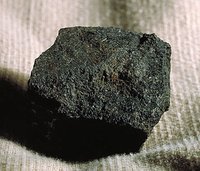Primary energy

Primary energy is the energy embodied in natural resources prior to undergoing any human-made conversions or transformations. Examples of primary energy resources include coal, crude oil, sunlight (Solar radiation), wind, running rivers, vegetation, and uranium. When primary energy is converted to a different form like the conversion of moving air molecules to rotational energy by the rotor of a wind turbine, which in turn may be converted to electrical energy by the wind turbine generator, part of the energy from the source is converted into unusable heat energy or, loosely speaking, is “lost.” Rotors, gearboxes or generators are never 100 percent efficient because of heat losses due to friction in the bearings, or friction between air molecules. These losses are attributable to the second law of thermodynamics.
The example of wind energy underscores an important issue with respect to measuring the primary energy content of wind and solar since these are not combustion technologies. The primary energy of wind and solar can be measured as the kinetic energy of wind and the solar energy (Solar power) received on a surface, which depends on the surface’s angle to the sun and the distance of the sun from the earth. These measurements, however, are not helpful for use in integrated energy systems models where all energy forms compete to satisfy end-use demand. At least two conventions for measuring non-fossil fuel primary energy have been adopted by the energy forecasting community for renewable energy and nuclear power generation:
- the output of the conversion technology is assumed to be the primary energy, which implicitly assumes a energy conversion efficiency of 100%, or,
- an average fossil fuel conversion factor is assumed and used to back calculate an equivalent fossil energy primary equivalent (e.g., kwh or Btu’s). Each method has shortcomings, but the convention does make it convenient to incorporate non-fossil sources into energy system models.
Further Reading
- Energy Information Administration, United States Department of Energy. Annual Energy Outlook.
- Kydes, Andy S., Amit Kanudiab and Richard Loulouc, 2004. National energy modeling systems. In: Cutler J. Cleveland (Editor), The Encyclopedia of Energy. Elsevier Science, Oxford. pp. 89-109.